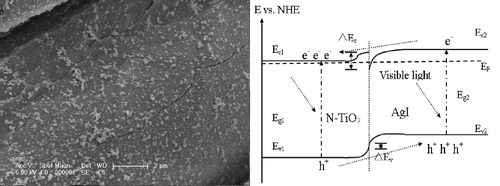Cotton fabric cleans itself when exposed to ordinary sunlight

Imagine jeans, sweats or socks that clean and de-odorize themselves when hung on a clothesline in the sun or draped on a balcony railing. Scientists are reporting development of a new cotton fabric that does clean itself of stains and bacteria when exposed to ordinary sunlight. Their report appears in ACS Applied Materials & Interfaces.
Mingce Long and Deyong Wu say their fabric uses a coating made from a compound of titanium dioxide, the white material used in everything from white paint to foods to sunscreen lotions. Titanium dioxide breaks down dirt and kills microbes when exposed to some types of light. It already has found uses in self-cleaning windows, kitchen and bathroom tiles, odor-free socks and other products.
Self-cleaning cotton fabrics have been made in the past, the authors note, but they self-clean thoroughly only when exposed to ultraviolet rays. So they set out to develop a new cotton fabric that cleans itself when exposed to ordinary sunlight.
Their report describes cotton fabric coated with nanoparticles made from a compound of titanium dioxide and nitrogen. They show that fabric coated with the material removes an orange dye stain when exposed to sunlight. Further dispersing nanoparticles composed of silver and iodine accelerates the discoloration process. The coating remains intact after washing and drying.
More information: Realizing Visible-Light-Induced Self-Cleaning Property of Cotton through Coating N-TiO2 Film and Loading AgI Particles, ACS Appl. Mater. Interfaces, Article ASAP. DOI: 10.1021/am201251d
Abstract
The visible-light-induced self-cleaning property of cotton has been realized by coating N-TiO2 film and loading AgI particles simultaneously. The physical properties were characterized by means of XRD, SEM, TEM, XPS, and DRS techniques. The visible light photocatalytic activities of the materials were evaluated using the degradation of methyl orange. In comparison with TiO2–cotton, the dramatic enhancement in the visible light photocatalytic performance of the AgI–N–TiO2–cotton could be attributed to the synergistic effect of AgI and N–TiO2, including generation of visible light photocatalytic activity and the effective electron–hole separations at the interfaces of the two semiconductors. The photocatalytic activity of the AgI–N–TiO2–cotton was fully maintained upon several numbers of photodegradation cycles. In addition, according to the XRD patterns of the AgI–N–TiO2–cotton before and after reaction, AgI was stable in the composites under visible light irradiation. Moreover, a possible mechanism for the excellent and stable photocatalytic activity of AgI–N–TiO2–cotton under visible light irradiation was also proposed.
Provided by American Chemical Society



















